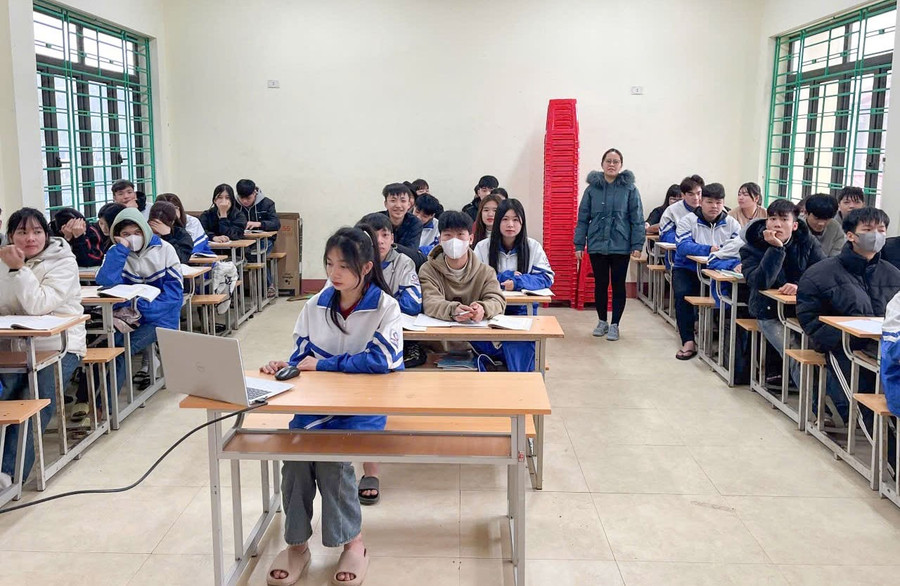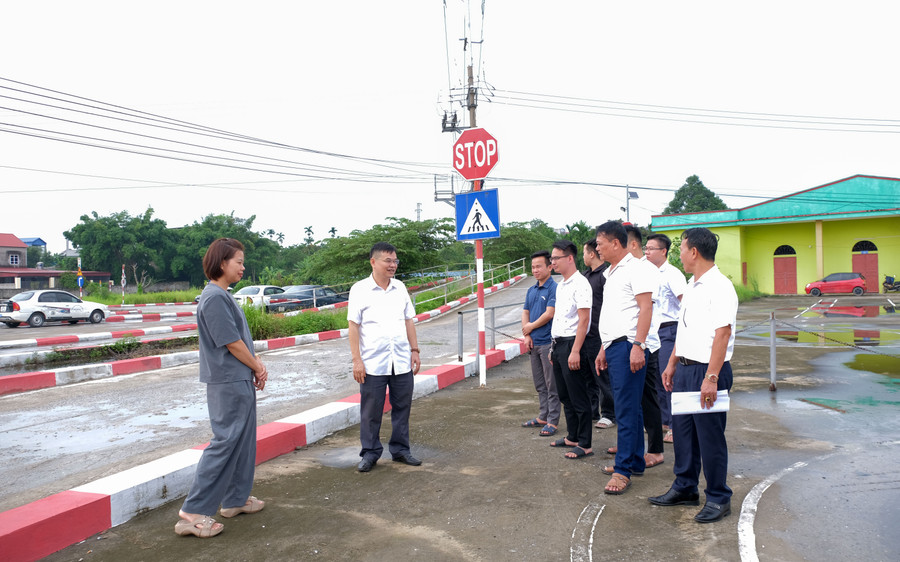Arrangement of training facilities
One of the tasks set out in Resolution 71 is to reorganize existing vocational education institutions to ensure they are streamlined, efficient, and meet standards. On September 18, 2025, the Ministry of Home Affairs issued Official Dispatch No. 8150/BNV-TCCB to the People's Committees of provinces and centrally run cities regarding the reorganization of public service units.
Accordingly, the provinces will merge vocational training centers and continuing education centers into high school-level vocational secondary schools under the Department of Education and Training to provide public career services in inter-ward and commune areas. The maximum number of vocational schools per province and centrally-run city is stipulated to be no more than 3 (excluding schools that are self-sufficient in regular expenditures or more).

Currently, Thai Nguyen has 10 colleges, 8 secondary schools, 2 continuing education centers, 2 vocational education centers, and 19 other establishments with vocational education activities. Of which, 31 units and schools (including 20 public and 11 private) are managed by the province, including: 2 colleges, 7 secondary schools, 2 continuing education centers, 2 vocational education centers (private), and 18 establishments with vocational education activities.
Mr. Nguyen Van Kien, Deputy Director of the Department of Education and Training of Thai Nguyen province, said: In the past, Thai Nguyen has resolutely implemented the merger of vocational training institutions managed by the province. Up to now, there are only 2 colleges left: Thai Nguyen College and Thai Nguyen Medical College. In the coming time, the Department of Education and Training will continue to advise the province on the task of arrangement and merger according to the direction of the Central Government.
According to Mr. Kien, the task of reforming and modernizing vocational education as stated in Resolution 71, especially the task of rearranging and reorganizing existing vocational education establishments to ensure they are streamlined, efficient, and meet standards, is very important. This work helps to concentrate resources, save the state budget, and create many conditions to improve the quality of vocational education.
Vocational high school - opening up a new path after junior high school
Resolution 71 also sets out the task of reforming the vocational education model, adding vocational secondary education equivalent to high school. This is a new policy, creating a clear direction for students to be divided after graduating from junior high school.
Establishing vocational secondary education helps students access skills early, graduate at working age (18 years old), and can continue to study at higher levels. Vocational secondary education will integrate cultural and vocational education, while secondary education is for high school graduates.
Mr. Trinh Van Tuong, Director of Phu Luong Vocational Education and Continuing Education Center (Thai Nguyen province) said: This arrangement overcomes the situation of many high school graduates but "have no job", and at the same time creates a clear and connected learning path.

Currently, the country has nearly 38 million untrained workers, the rate of workers with degrees and certificates is only 28.8%, of which only about 25% have vocational certificates. Most of the workers have only received short-term training of a few months, lacking a basic skill base. Vocational secondary education, if implemented systematically, will become the first level to form real vocational skills.
Encourage businesses to establish vocational training facilities
Resolution 71 sets out the task of encouraging enterprises to establish vocational training facilities; having a mechanism to establish a fund for training human resources of enterprises, promoting enterprises to support retraining and training to improve skills for the workforce.
Mr. Pham Duc Thuan, Principal of the Vietnam-USA Vocational College (Thai Nguyen province) said that encouraging businesses to establish vocational training facilities will create more opportunities to provide high-quality educational facilities to meet the needs of learners and the labor market. Establishing a human resource training fund will be an effective solution to mobilize social resources.

According to Mr. Thuan, enterprises participating in vocational education contribute to linking training activities with recruitment needs according to the model of "training according to what enterprises need". To do this, vocational skills councils will be established right at the school, with the direct participation of enterprises. The council and the school will develop programs, organize teaching, evaluate capacity and recruit students after graduation.
Resolution 71 opens up great opportunities for reforming and modernizing vocational education. This is a strategic step to meet labor needs in the era of industrialization and modernization. Most importantly, learners will have many choices and real opportunities to establish themselves and build their careers.
Source: https://giaoducthoidai.vn/co-hoi-tu-cai-cach-hien-dai-hoa-giao-duc-nghe-nghiep-post749253.html



![[Photo] The 4th meeting of the Inter-Parliamentary Cooperation Committee between the National Assembly of Vietnam and the State Duma of Russia](https://vphoto.vietnam.vn/thumb/1200x675/vietnam/resource/IMAGE/2025/9/28/9f9e84a38675449aa9c08b391e153183)
![[Photo] Joy on the new Phong Chau bridge](https://vphoto.vietnam.vn/thumb/1200x675/vietnam/resource/IMAGE/2025/9/28/b00322b29c8043fbb8b6844fdd6c78ea)
![[Photo] High-ranking delegation of the Russian State Duma visits President Ho Chi Minh's Mausoleum](https://vphoto.vietnam.vn/thumb/1200x675/vietnam/resource/IMAGE/2025/9/28/c6dfd505d79b460a93752e48882e8f7e)





























































































Comment (0)